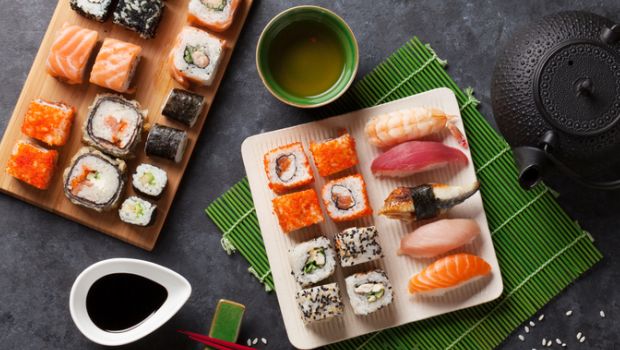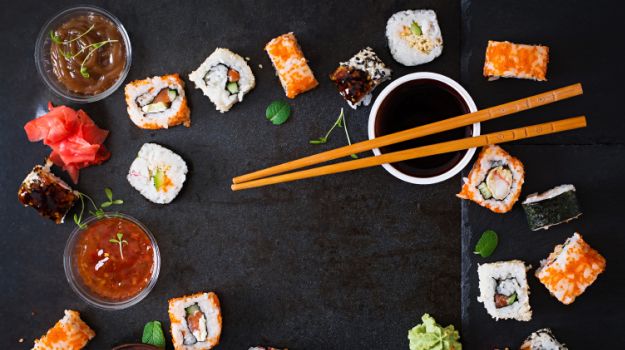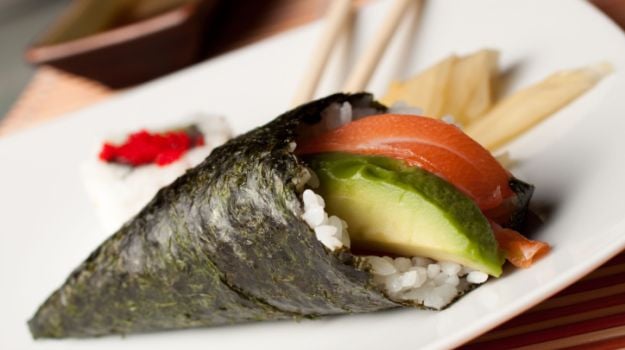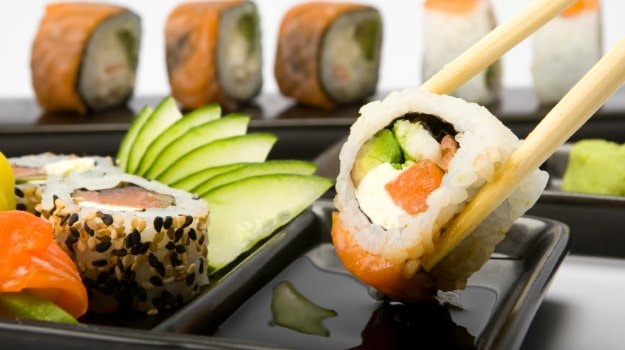If you have never eaten or experienced this 2000-year old Japanese delicacy before, it's perfectly normal to be overwhelmed by the exquisite ingredients used for its preparation and presentation.The holistic experience of eating sushi is influenced not only by how it's prepared, but also by how one eats it. Here are some basic things that you can keep in mind to thoroughly enjoy your first sushi escapade.1. Learning the basics of SushiSince fish is the core ingredient of this dish, a first-time sushi eater should ensure that it is not poorly prepared as this can lead to ruining the entire experience and discourage you from eating it again, especially if you are not fond of seafood to begin with. The very basic types of sushi rolls include Sashimi, Nigiri, Maki, and Temaki. Maki is also referred to as a 'sushi roll' which typically includes fish and vegetables rolled with rice in a sheet of roasted seaweed (nori) and cut into bite-sized portions. You can consider this as the best starting point if you are queasy about eating raw fish. Traditionally, the Japanese sushi roll has 6 pieces wrapped in seaweed.
(Also Read: A Beginner's Guide to Eating Sushi ) Image Credit: IStock2. Know your condimentsA plate of sushi includes wasabi also known as Japanese horseradish, a green ball of paste which has an extremely strong pungency. They serve powdered wasabi mixed with water. Wasabi powder is dried horseradish, mustard seed, corn filler, and cabbage. This spicy condiment is sometimes included in maki and nigiri, but is available if you desire more. Pickled ginger comes in thin, pink or white tan slices on the side of the plate and is used for cleansing the palate between bites. You'll also have a shallow dish to dip your sushi in soy sauce.
Image Credit: IStock2. Know your condimentsA plate of sushi includes wasabi also known as Japanese horseradish, a green ball of paste which has an extremely strong pungency. They serve powdered wasabi mixed with water. Wasabi powder is dried horseradish, mustard seed, corn filler, and cabbage. This spicy condiment is sometimes included in maki and nigiri, but is available if you desire more. Pickled ginger comes in thin, pink or white tan slices on the side of the plate and is used for cleansing the palate between bites. You'll also have a shallow dish to dip your sushi in soy sauce.
 Image Credit: IStock
Image Credit: IStock
3. Ordering SushiYou should go for recommendations from the chef directly if possible and opt for fresh items since sushi includes raw fish which tastes the best when your sushi is freshly prepared. Aim for a variety of sushi rolls both in vegetarian and non-vegetarian categories. The menus are no more limited to raw fish rolls but also include a plethora of options ranging from prawn rolls, chicken rolls, and vegetable sushi rolls. Ordering a mix of nigari, maki and the recommended rolls at the sushi bar will not only help you get familiarized with the available variety, but will also boost your entire experience.
 Image Credit: IStock4. Eating Sushi
Image Credit: IStock4. Eating Sushi Image Credit: IStockKeeping these tips handy, you can now easily order for yourself a plateful of sushi and start warming up to this mouth-watering Japanese delicacy.
Image Credit: IStockKeeping these tips handy, you can now easily order for yourself a plateful of sushi and start warming up to this mouth-watering Japanese delicacy.
(Also Read: A Beginner's Guide to Eating Sushi )


3. Ordering SushiYou should go for recommendations from the chef directly if possible and opt for fresh items since sushi includes raw fish which tastes the best when your sushi is freshly prepared. Aim for a variety of sushi rolls both in vegetarian and non-vegetarian categories. The menus are no more limited to raw fish rolls but also include a plethora of options ranging from prawn rolls, chicken rolls, and vegetable sushi rolls. Ordering a mix of nigari, maki and the recommended rolls at the sushi bar will not only help you get familiarized with the available variety, but will also boost your entire experience.

- Clean your hands before eating sushi. Many sushi bars will provide a hot and moist towel for this reason before serving your food. While you can choose to eat with chopsticks, it is acceptable to eat sushi with your hands, therefore wash your hands thoroughly before you begin.
- Pour a tiny amount of soy sauce into the dipping bowl which can be mixed with a small amount of wasabi. You need to be careful when dipping the sushi roll into the soy sauce as the fish needs to be dipped first and not the rice, so that the piece can stay together and won't become soaked with the salty soy sauce. If the sushi already has sauce on it, do not dip it in the soy sauce. Try enjoying it as the chef has seasoned it. You can layer it with a thin slice of ginger if you like.
- Alternatively, you can use chopsticks to dip the ginger in the soy sauce, and then use it to brush the sauce onto the fish rather than dip the fish directly. This also gives the flavor of ginger without eating it.
- Ideally, sushi is supposed to be eaten in one bite. If the piece is too big, eat it in two bites. If you pay attention to both the flavors and the textures, then you will be surprised with how mild and tender the fish is.
- Keep refreshing your mouth with a slice of ginger in between bites. Refrain from eating it in the same bite as sushi, and don't eat big blobs of ginger all at once as it may overpower the taste of the sushi.

Advertisement








